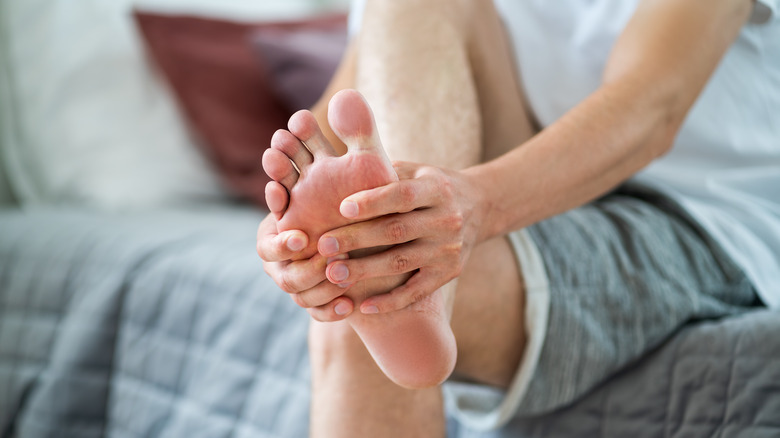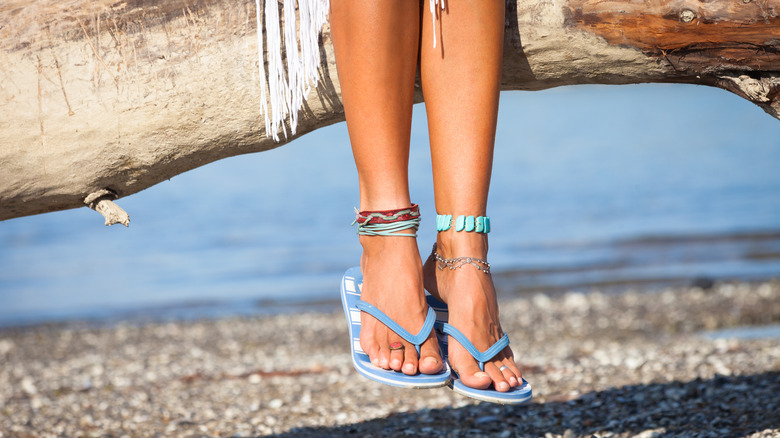How Can You Avoid Getting Plantar Warts?
Plantar warts are common, noncancerous growths that develop on the soles of the feet. They are caused by the human papillomavirus (HPV), which can enter the skin through small cuts on the foot, and are usually located on the balls of the feet or the heels, per the Mayo Clinic. Once the virus enters the skin, it can cause a growth to form, which is what we refer to as a plantar wart. Plantar warts can be uncomfortable, unsightly, and quite persistent. They are typically small and rough to the touch and may be surrounded by small black dots, which are actually small blood vessels that the virus has disrupted.
While plantar warts are not typically dangerous, they can be uncomfortable or painful to stand or walk on. If you are looking to prevent plantar warts, fortunately, there are several things you can do to avoid getting new or recurring growths.
How can you avoid getting plantar warts?
One of the best things you can do to avoid getting plantar warts is to wear protective footwear and avoid walking barefoot in public places. Plantar warts can be contracted from contaminated surfaces, such as locker room floors and public swimming pools, per WebMD. When you wear shoes or sandals in these environments, you can reduce your risk of contracting the virus that causes warts. Also, keep your feet clean and dry. Moisture can make your feet more susceptible to plantar warts, per the American Academy of Dermatology Association. It's also important to be cautious about sharing personal items such as towels, razors, or socks — these items can potentially spread the virus that causes plantar warts.
If you notice any unusual growths or bumps on your feet, you should make an appointment with your healthcare provider. While plantar warts can go away on their own, it may take a long time. Early intervention can help prevent plantar warts from spreading and make treatment easier and more effective.
Other treatment options for plantar warts
If you've already contracted plantar warts, treatment may be necessary to alleviate symptoms and prevent them from spreading. Several options are available, such as prescription-strength salicylic acid — these medications can be applied directly to the wart to help dissolve it over time, per the Mayo Clinic.
Some other treatments may be uncomfortable or painful and require multiple appointments or treatments to be effective. One example is cryotherapy, which involves freezing the wart with liquid nitrogen. The freezing causes the wart to blister and eventually fall off, and it can be an effective treatment for some people. Laser therapy, another treatment option, involves using a laser to burn the wart off the skin. This treatment might need to be repeated every two to four weeks.
In some cases, a healthcare provider may recommend surgical removal of the wart. This involves cutting the wart out of the skin and may require a local anesthetic. This treatment is typically reserved for more severe cases that haven't responded to previous treatment.



